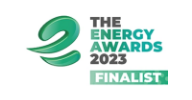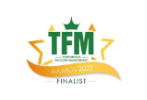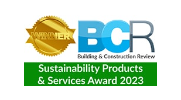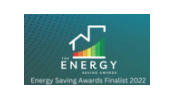UK commercial properties planning to invest in reducing carbon emissions should be considering hot water storage as a core part of their strategy. With the aim of driving down 78% of carbon emissions by 2035 the government’s focus for net zero has leant heavily on the introduction of heat pumps and a transition to grid electricity, with particular stress and support placed on domestic installations. Many will argue that this is leading to a critical oversight of the commercial sector, and a rush to embrace new technology rather than considering existing options that support high temperature, intensive and/or long peaks, plus the multi-outlet demands typically found in commercial hot water applications. Hot water cylinders are a case in point, with proven, untapped potential to be used for smarter thermal storage.
Indirect-fired water heaters (also known as calorifiers) and buffer tanks are a requirement on commercial build projects where large volume storage of water at high temperatures is specified. In essence, these act as the batteries of a domestic hot water (DHW) system within a commercial property and can be more cost-effective and less environmentally damaging.
To introduce thermal energy into the hot water cylinder an additional heat source is required. Typically, the water will be heated directly by a gas or more preferably now an electric boiler, passing it through the cylinder and using heat exchange to transfer energy to the cold water in a separate system of pipework. This does mean that an indirect water heater cannot react as quickly to demand as a direct-fired water heater, however, with the cylinder working as a buffer and storing the hot water reduces the operational demands placed on the boiler. With the boiler no longer required to work as hard to meet the DHW needs of a building, energy is saved, costs are reduced and emissions fall.
Due to the transfer of heat through the walls of the heat exchanger element, the two fluids do not mix. Important for carbon-lowering strategies, this allows for more options in terms of the external heat supply and introduces a range of renewable technologies that use other fluids for heat transfer including solar thermal collectors and Air Source Heat Pumps (ASHP). Using heat pumps or solar as an energy source to preheat water within an indirect cylinder then enables a reduction in work from the direct top-up heat source. This is what enables DHW systems to reduce energy costs and emissions to varying degrees depending on whether this additional heating is provided by electricity or gas.
This is why hot water storage systems need to be seen as an essential part of any renewable strategy where energy input needs to be stored or deployed as and when required. One other key advantage of separating the supplies is that the risks of external contamination such as a build-up of scale in hard water areas or the corrosive effects of soft water are curtailed. Limescale is proving especially damaging in new high-intensity, all-electric systems installed in hard water areas.
Some will argue that since hot water storage is short term it lacks the versatility of local electric production and battery storage. But as with any hot water application, understanding the relationship between storage and recovery, and correct sizing is extremely important for efficient and cost-effective operation by ensuring thermal demands are optimised and not wasted.
According to the Hot Water Association a 300-litre tank, similar in size to that employed in smaller commercial projects, will store approximately 14kWh of energy. That is directly comparable to the storage capacities exhibited by current generation battery systems, but without the environmental footprint of Cobalt, and Lithium, used in their manufacture. Considerations of the harmful manufacturing processes and embedded carbon are rightly being incorporated as part of a well-thought-through sustainability strategy, so again hot water cylinders, typically manufactured with recycled copper and stainless steel, are a more environmentally friendly, well-understood, easy-to-install and much lower cost alternative for comparable gains.
At the heart of a successful low-carbon hot water system is a well-informed application design. Patterns of hot water usage and recognition of periods of peak demands often make sizing a complicated process. Poorly designed systems will therefore often overcompensate and, by being oversized become more costly and less efficient.
At its simplest, a commercial system should hold an hour of hot water output in storage, but the function of the building, its population and activities will adjust requirements, for example, where hospitals will typically exhibit a 24/7 demand for hot water, schools and offices may be limited to just 7½ hours per day. In some refurbishment scenarios, we will also see a physical limitation of space available for DHW storage, in which case a system will put more demand on the boiler or renewable to increase the output for preheating, reducing the required size of the cylinder.
Integrating an indirect water heater within a hot water system gives you a number of design options, as a larger cylinder means the boiler can be smaller, or the reverse if the existing system has a large efficient boiler. Understanding the hot water demand is critical. If demand is not so great, then using a larger cylinder can lead to unnecessary capital and ongoing operational expenditure. Go too small and the storage could prove inadequate and the system will not achieve its operational requirements. Attaining the correct balance of demand and efficient, cost-effective supply is what ultimately defines a successful system.
At Adveco, these factors are supported by a wide variety of cylinders. The Stainless Steel Indirect (SSI) range, for example, is supplied with a single high-output internal heat exchange coil at a low level to serve as an indirect water heater.
The ATSx range provides water heaters designed to be used with indirect heat sources across a range of DHW installations exhibiting smaller demands but requiring more than six bar pressure. For more complex and renewable-based systems, the Stainless Steel Twin-Coil (SST) or ATSR ranges offer a pair of independent internal heat exchange coils to serve DHW systems. Each high-output coil can be used with a separate heat source, enabling effective integration of renewable technologies or multiple heat sources, or alternatively can be combined to increase the heat transfer capacity from a single high-output source.
The GL range of hot water cylinders provides a lower cost choice, with the GLC serving as indirect water heaters or preheat vessels, GLE serving as an electric water heater or buffer, and the GLT range offering twin coils for two separate heat sources.
These hot water cylinder ranges come with multiple connectivity options and offer from 200 to 5000 litres of storage, giving specifiers a wealth of choices when designing bespoke DHW systems with Adveco.













